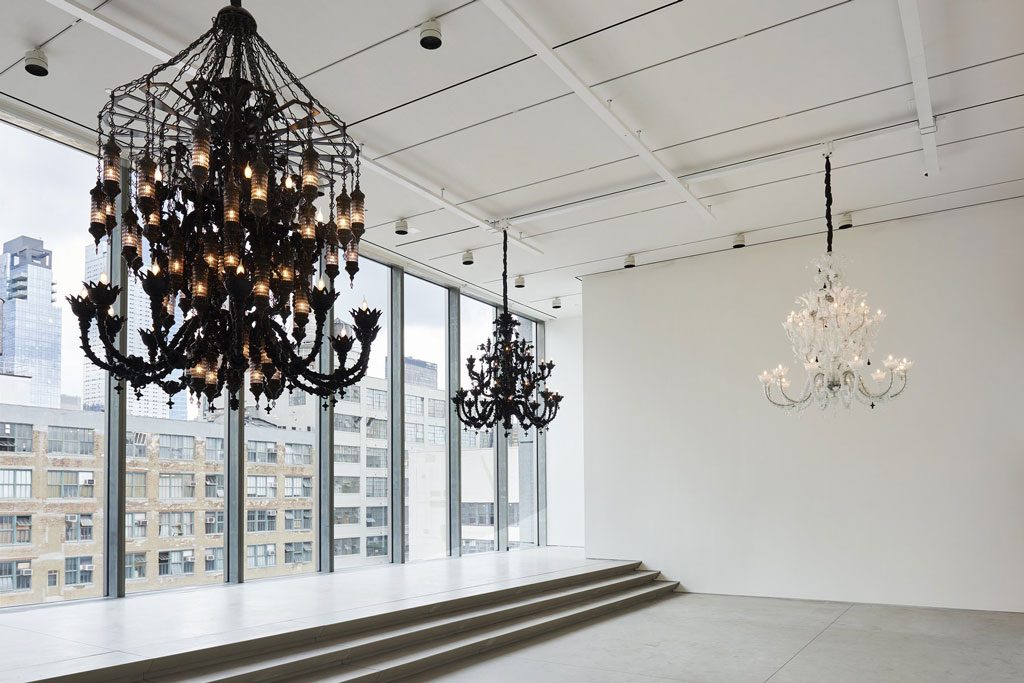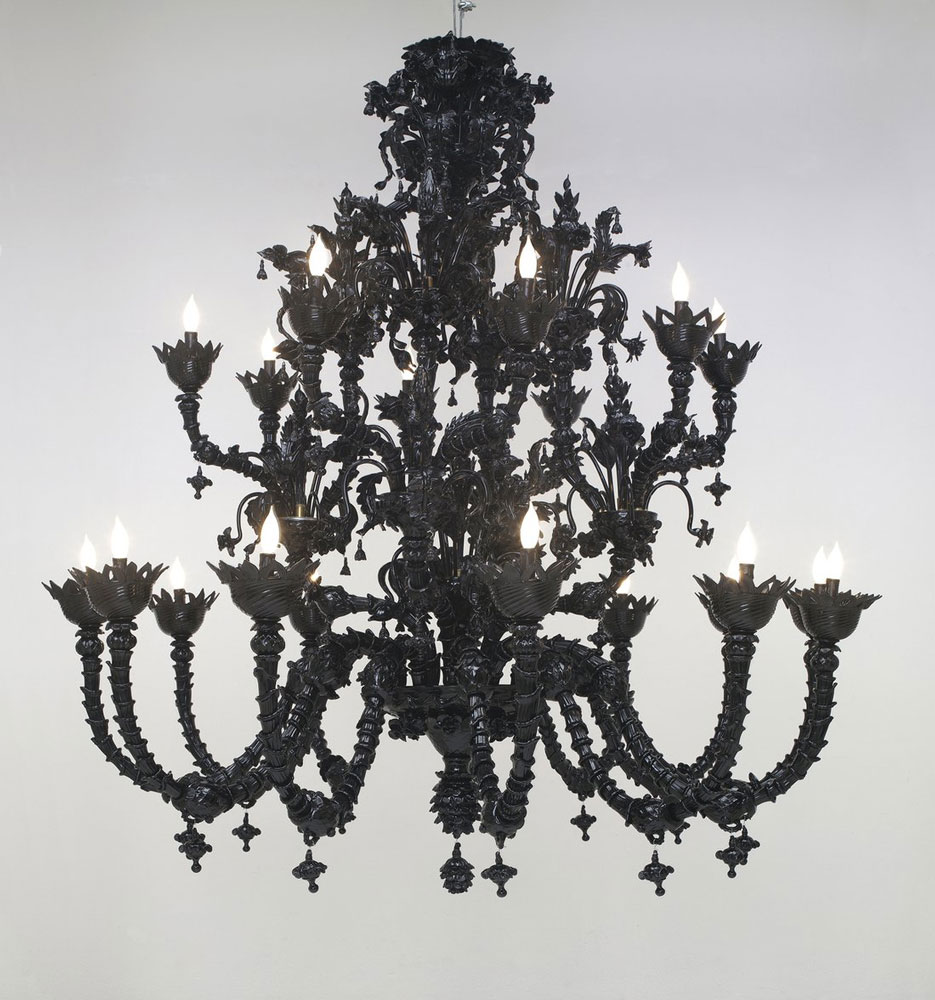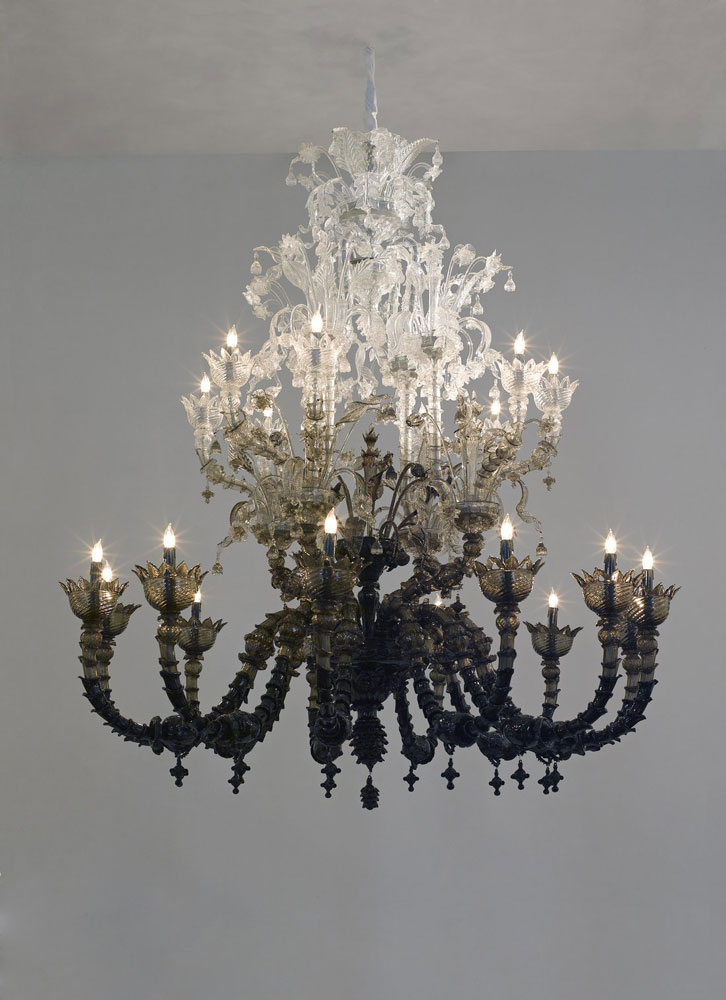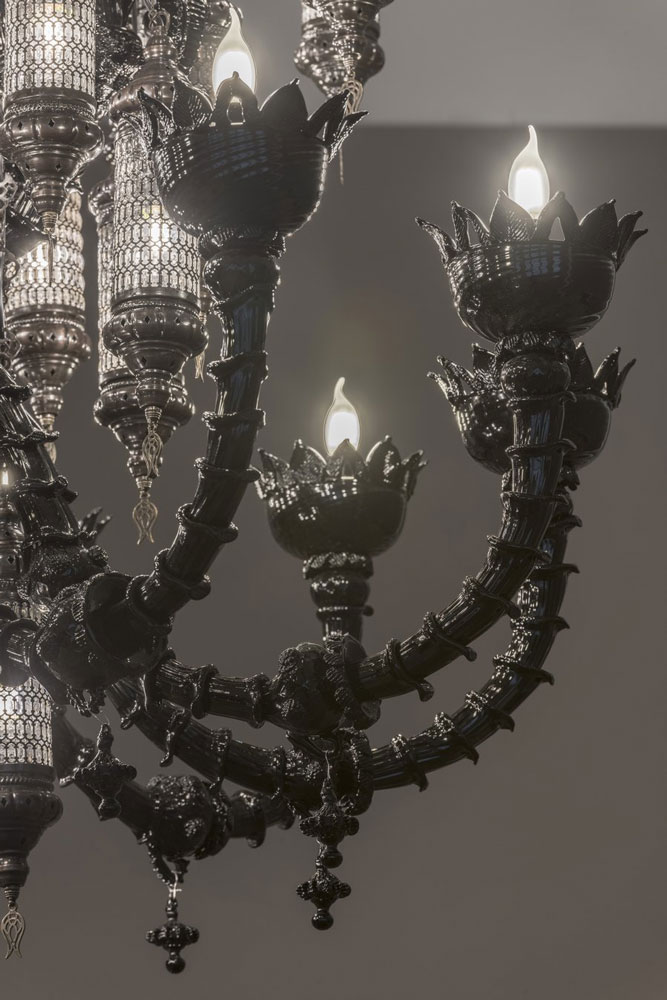ART-PRESENTATION: Fred Wilson-Chandeliers
 Through precise positioning and angling of previously existing antiques and original sculptures in his exhibition spaces, Fred Wilson brings to light the unjust practices used to display art in museums, practices that tend to focus purely on the Western canon. The changes in context create changes in meaning, highlighting the politics of erasure and exclusion. Wilson’s creative process often involves community outreach and research in the cities where he produces his projects.
Through precise positioning and angling of previously existing antiques and original sculptures in his exhibition spaces, Fred Wilson brings to light the unjust practices used to display art in museums, practices that tend to focus purely on the Western canon. The changes in context create changes in meaning, highlighting the politics of erasure and exclusion. Wilson’s creative process often involves community outreach and research in the cities where he produces his projects.
By Dimitris Lempesis
Photo: Pace Gallery Archive
Spanning 15 years and are being shown as a group for the first time, 5 of Fred Wilson’s Murano glass chandeliers ae on show at Pace Gallery’s new global headquarters in New York. Wilson’s first chandelier, was made in 2003 when he represented the United States at the 50th Venice Biennale. Since then, Wilson has continued to experiment with Murano glass design elements as his chandeliers have evolved over the years as vehicles for the artist’s meditations on blackness, beauty, and death. For Wilson’s exhibition, “Speak of Me as I Am” at the Venice Biennale, he investigated the history of Venice’s African population, fully immersing himself in the study of how Africans were depicted in 17th and 18th Century Venetian paintings and decorative arts. Using phrases from Shakespeare’s Othello to title his first as well as most subsequent chandeliers, Wilson created “Speak of Me as I Am: Chandelier Mori” in Murano in the traditional Rezzonico style. Made in black glass, it is the first black chandelier ever to be created in the history of Venetian glassmaking. Wilson’s chandeliers utilize the seductive beauty of Venetian craftsmanship while simultaneously subverting assumptions of a homogenous European culture. Continuing to expand on this body of work, Wilson made “The Way the Moon’s in Love with the Dark” for his installation “Afro Kismet” which was exhibited at the Pera Museum in the Istanbul Biennial in 2017. Combining black Murano glass with traditional metal and glass elements of Ottoman chandeliers, this work underscores the centuries long and complicated relationship between Venice and Istanbul, two cultural crossroads whose expansive empires grew based on their strong and beneficial trading partnership. The title of the piece is a quote from the work of Alexander Pushkin, whose great grandfather was African and is believed to have passed through Istanbul before becoming part of the Imperial Household in Moscow and a general in the Russian Army. Wilson’s work melds cultural symbols and unconventional materials, raising questions about erasure and exclusion in society. With the creation of these ornate sculptures, Wilson highlights the long-ignored presence of communities of African descent in Western culture. The chandeliers exemplify his practice, making something new while shedding light on a history that has been underrepresented.
Info: Pace Gallery, 540 West 25th Street, New York, Duration: 14/9-12/10/19, Days & Hours: Tue-Sat 10:00-18:00, www.pacegallery.com



